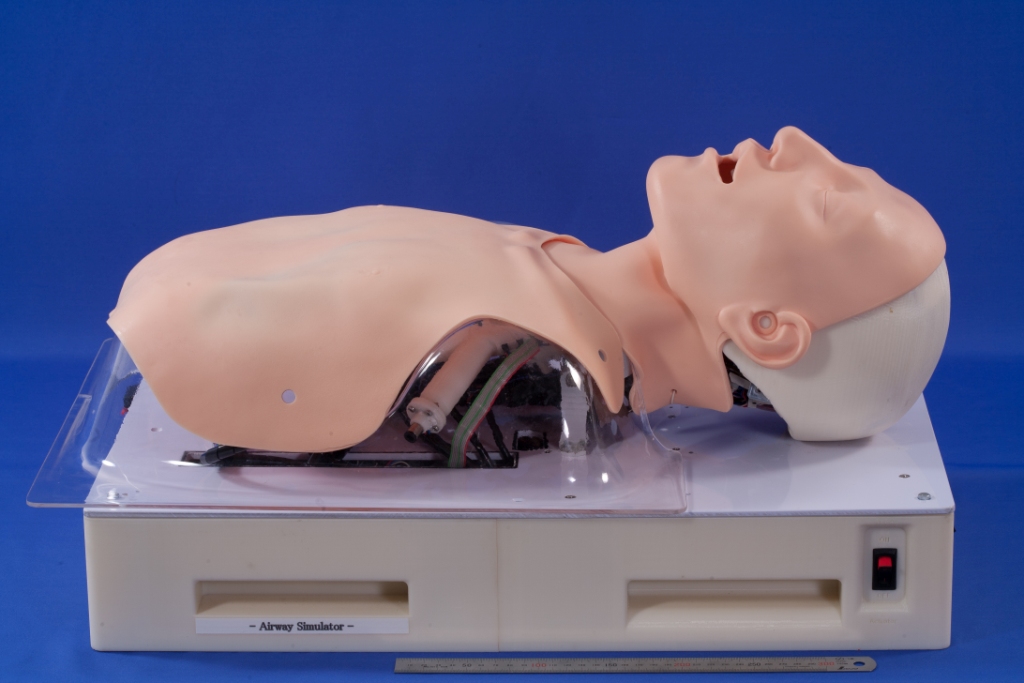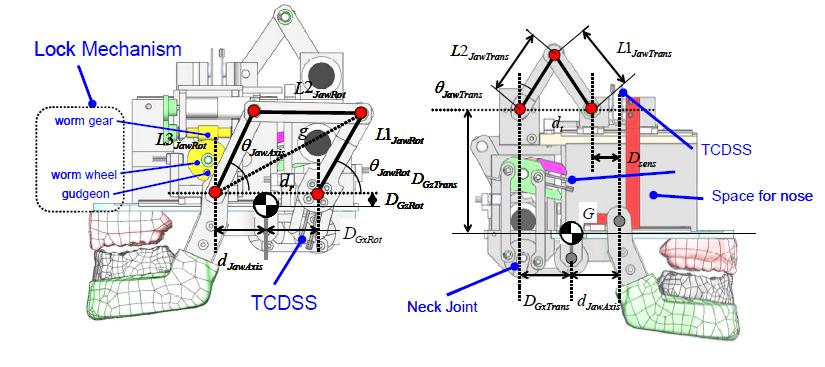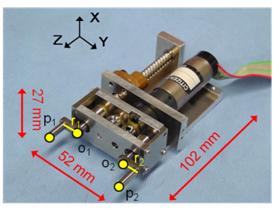
WKA-5
(Waseda Kyotokagaku Airway-No.5)
This study reports on the development of an Airway Management Training System. Airway management is a standard operation executed in emergency and operating rooms. However, medical accidents occur due to unskilled operations. In order to avoid accidents, medical doctors undergo to mannequin-based training. However, traditional training techniques do not provide quantitative information on the trainee's performance and are not capable to assess the trainee's performance based on the quantitative information. In this context, we proposed an innovative training system which can provide quantitative information on the trainee's performance and are capable to assess the trainee's performance based on the quantitative information. From the concept of the proposed innovative training system, in 2010, Takanishi Laboratory developed Waseda Kyotokagaku Airway No. 5 (WKA-5)
・Minimize the head in order to reappear real head
・Development of new mechanism for variation of tongue
 Fig.1 Medical simulator |
2. Mechanism
In order to simulate real world condition of the real patient, we adopt a crank link and the head of the WKA-5, we adopt a crank link mechanism and four link mechanism (Fig. 2-3).
2.1 Head

Fig.2 comparison table of head

Fig.3 jaw mechanism
|
▲Top page
2.2 Tongue
in order to reproduce various shapes of the tongue, we adopt new tongue mechanism which consists of slide screw mechanism, and two rotational links. By rotating two links on the circles, the various shapes of the tongue patterns are reproduced.

Fig.4 tongue mechanism
|
▲Top page
3. Movement of WKA-5
|
▲Top page
4. Future work
By applying the concept of the innovative training system, Takanishi
Lab. proposes a novel and effective airway management training system.Beginning in 2006, Takanishi Lab. have been developing an airway management training system, WKA (Waseda Kyoto Kagaku Airway), which likewise aims for commercialization in the near future. Takanishi Lab.
presented the Waseda Kyotokagaku Airway No. 1 Refined (WKA-1R) which
has embedded sensor systems to provide quantitative information on the
trainee’s performance. In 2007, Takanishi Lab. also developed the
Waseda Kyotokagaku Airway No.2 (WKA-2) in order to reproduce airway
difficulties such as various cases and individual difficulties in
order to simulate the real-world conditions of the task. In 2008,
Takanishi Lab. also developed Waseda Kyotokagaku Airway No.3 (WKA-3)
which has 6 embedded actuators and 56 embedded sensors. These sensors
cannot only measure quantitative information on the trainee’s
performance, but can also simulate the real world conditions of the
task by applying force control to the system. In 2009, Takanishi Lab.
proposed Waseda Kyotokagaku Airway No.4 (WKA-4), which meets all those
requirements of effective innovative training systems. Particularly,
for the simulation of the motions of those parts as in a real human
being, the WKA-4 improved mechanisms with high-fidelity simulated
human anatomy, and Virtual Compliance Control is implemented to
reproduce the stiffness of the human’s muscles. In 2010, Takanishi
Lab. proposed Waseda Kyotokagaku Airway No.5 (WKA-5), which provides
the high-fidelity simulated human anatomy, and improves those
mentioned defects of the WKA-4 for better simulation of the real-world
conditions of the task.
 Fig. 5 Research Roadmap |